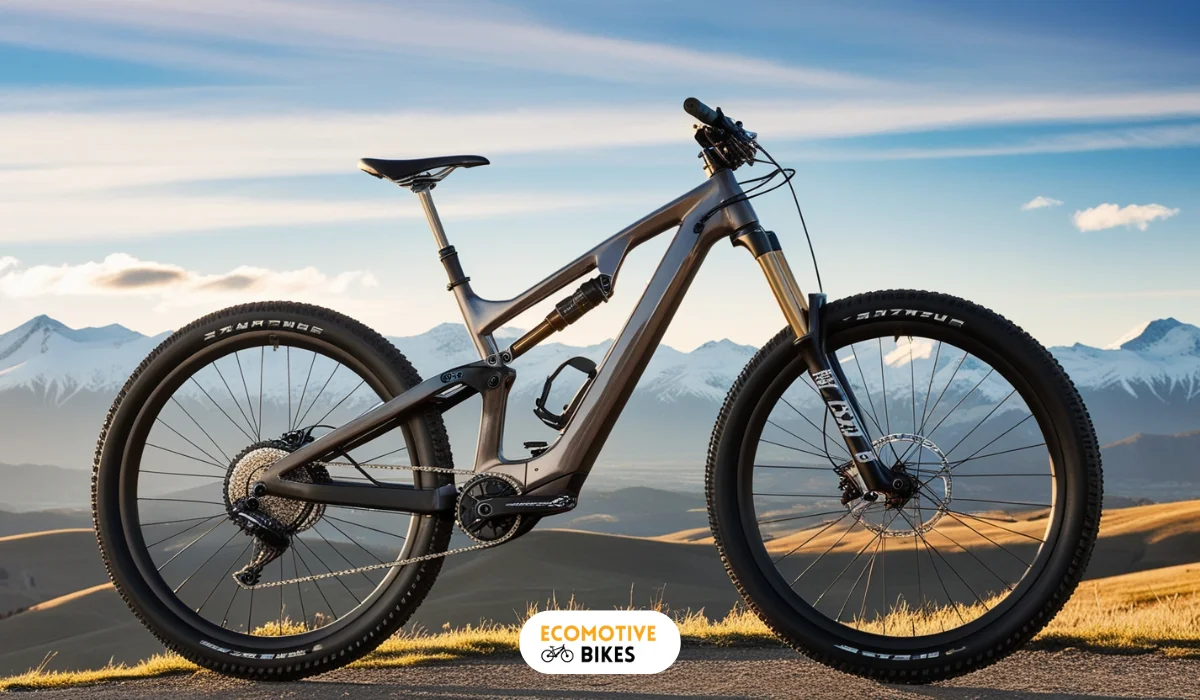How to charge an electric bike battery without a charger?
Are you stuck with a dead electric bike battery and no charger in sight? I t’s not the end of the road, dear! There are practical, safe, alternative methods to revive your electric bike battery without a charger. And we will tell you how to do so through this blog post “How to charge electric…
Table of Contents
Related Articles:
Are you stuck with a dead electric bike battery and no charger in sight? I t’s not the end of the road, dear! There are practical, safe, alternative methods to revive your electric bike battery without a charger. And we will tell you how to do so through this blog post “How to charge electric bike battery without charger?” So, ditch the stress and discover creative ways to keep your e-bike adventures rolling!
Understanding your electric bike battery
Before you explore charging your electric bike battery without a charger, it’s imperative to understand the basics of your battery. This knowledge will help you make informed decisions and ensure safe and efficient charging.

Types of electric bike batteries
You’ll likely have one of the following types of electric bike batteries:
- Lead-Acid (SLA) batteries
- Nickel-Cadmium (Ni-Cd) batteries
- Nickel-Metal Hydride (NiMH) batteries
- Lithium-Ion (Li-ion) batteries
- Lithium-Iron Phosphate (LiFePO4) batteries
After identifying your battery type, you’ll be better equipped to determine the best charging method.
There’s a wealth of information to consider regarding your electric bike battery. Here’s a breakdown of key factors to keep in mind:
| Battery Type | Characteristics |
| Lead-Acid (SLA) | Heavy, low-cost, relatively low energy density |
| Nickel-Cadmium (Ni-Cd) | Toxic, relatively low energy density, prone to memory effect |
| Nickel-Metal Hydride (NiMH) | Less toxic, higher energy density, prone to self-discharge |
| Lithium-Ion (Li-ion) and Lithium-Iron Phosphate (LiFePO4) | High energy density, relatively lightweight, environmentally friendly |
Environmental influences:
- Temperature extremes: Extreme heat or cold can degrade your battery’s health, reducing its capacity and lifespan.
- Frequent use: Constant use puts a strain on the battery, impacting its overall life.
Building battery longevity:
- Storage savvy: Proper storage, ideally in cool, dry environments, helps maintain battery health.
- Preserving health for off-grid adventures: Off-grid charging scenarios necessitate extra care for your battery. Practices like regular charging and minimizing deep discharges become even more crucial.
Alternative charging methods
While a standard charger is the most common method for replenishing an e-bike battery, you don’t know there are ingenious ways to recharge your e-bike battery without a charger. Here are the most common and effective alternative charging methods.
Utilize a USB Port
For e-bikes equipped with smaller batteries, a USB port can be a convenient solution. Here’s a breakdown of the process:
- Identify compatible USB connection: Locate the appropriate USB port type (micro-USB, USB-C, etc.) on your battery and ensure you have a compatible cable.
- Select a suitable power source:
- Portable power bank: Ideal for on-the-go charging, particularly useful during outdoor excursions.Computer/Laptop: A viable option if readily available, but charging speeds may be slower compared to a dedicated power source.
- USB wall adapter: Provides a stable and often faster charging experience at locations with wall outlets.
- Secure connection and monitoring: Securely connect the USB cable between your chosen power source and the e-bike battery. Monitor the charging process for any signs of overheating or unusually slow charging rates.
- Disconnect upon completion: Once fully charged, safely disconnect the USB cable from both the battery and the power source.
Charge from a car battery
In an emergency, a car battery can provide a temporary charging solution for your e-bike battery. However, exercising extreme caution is crucial:
- Cable selection and connection: Utilize jumper cables or appropriate wiring to establish a connection between your e-bike’s lithium-ion battery and your car’s lead-acid battery.
- Current flow regulation: To prevent overloading the e-bike battery, implement current flow control mechanisms using light bulbs connected to the wiring. Ensure the light bulb voltage aligns with the requirements of your e-bike battery.
- Constant vigilance: Closely monitor the charging process to prevent potential damage from overheating or overcharging.
Solar power charging
For environmentally-conscious riders embarking on extended journeys, solar panels offer a sustainable charging solution:
- Essential equipment: Acquire a high-quality solar panel, solar charge regulator, and inverter. Always prioritize proper safety gear when handling solar panels to avoid electrical shock hazards.
- Maximize sun exposure: Position the solar panels for optimal sun exposure and connect them to your e-bike’s battery.
Clip charger method for direct terminal connection
This method involves a specialized clip charger with connectors designed to connect directly to the battery’s terminals:
- Battery removal and placement: Safely remove the e-bike battery from the frame and place it securely in the designated loading station of the clip charger, ensuring proper alignment of contact points.
- Power source connection: Connect the clip charger to a stable power source. An indicator light on the charger should illuminate, signifying successful power reception.
- Charging status monitoring: Monitor the charging process using the indicator lights or display on the clip charger. Periodic checks on the battery are recommended, especially during the initial use of this method.
Pedal power charging (if applicable)
Certain e-bikes boast a “Pedal Charging” feature that leverages regenerative braking technology:
- Regenerative braking fundamentals: Unlike traditional brakes that dissipate kinetic energy as heat, regenerative braking systems capture this energy and convert it into electricity.
- Kinetic energy generation through pedaling: As you pedal an e-bike equipped with this feature, the kinetic energy generated is captured instead of being wasted during deceleration or downhill riding.
- Energy conversion process: The captured kinetic energy is then converted into electrical energy by the motor and braking system, essentially functioning as a generator.
- Battery recharging: The generated electricity is fed back into the e-bike’s battery, supplementing its charge and extending the overall range achievable on a single charge.
Prioritize safety and manufacturer recommendations
It’s important to emphasize that while these alternative methods can provide a temporary solution, consulting your e-bike’s manual and prioritizing safety measures is paramount before utilizing any non-standard charging techniques. For optimal battery performance and longevity, adhering to the manufacturer’s recommended charging procedures is always recommended.
Tips for safe and efficient charging
Once again, it’s crucial to emphasize the importance of safe and efficient charging practices when charging your electric bike battery without a charger. Here are some valuable tips to keep in mind:
- Monitor the voltage: Keep an eye on the voltage levels to avoid overcharging or undercharging.
- Use a multimeter: Invest in a multimeter to measure the voltage and current flow.
- Avoid extreme temperature: Charge your battery in a room with a comfortable temperature range (between 60°F to 80°F).
- Avoiding Overcharging and Undercharging: Avoid overcharging, as it can cause damage to the cells, and undercharging, which can reduce the battery’s overall capacity. A good rule of thumb is to charge your e-bike battery until it reaches 80% capacity, then reduce the charging current to a trickle charge to prevent overcharging. Keep an eye on the charging time and voltage levels to ensure a safe and complete charge.
- Charge in a well-ventilated area: Any time you charge your electric bike battery, make sure you’re in a well-ventilated area to prevent the buildup of flammable gases. Good airflow around the charging area is vital, as it helps to dissipate heat and reduce the risk of fire hazards.
Factors to consider when charging without a charger
To charge your electric bike battery without a charger, you’ll need to consider several crucial factors to ensure safe and efficient charging. These factors will help you avoid damaging your battery or causing any harm to yourself.
- Battery age and condition
- Environmental factors (e.g. temperature)
- Power source capacity and reliability
Battery age and condition
For optimal charging, it’s necessary to consider the age and condition of your electric bike battery. Older batteries may have reduced capacity, and charging them incorrectly can cause further damage. Check your battery’s warranty and maintenance records to determine its condition and charging requirements.
Environmental factors (e.g. Temperature)
For safe charging, you need to consider the environmental factors that can affect your battery’s performance. Extreme temperatures can impact charging efficiency and battery health.
- Avoid charging in extremely hot or cold temperatures
- Keep your battery away from direct sunlight and moisture
Temperature Guidelines for Charging Electric Bike Batteries
| Temperature Range | Charging Recommendations |
| Below 32°F (0°C) | Avoid charging; store the battery in a cool place |
| 32°F to 50°F (0°C to 10°C) | Charge slowly and monitor battery health |
| 50°F to 77°F (10°C to 25°C) | Optimal charging temperature range |
| Above 77°F (25°C) | Avoid charging; store battery in a cool place |
Avoid charging your electric bike battery in extreme temperatures, as this can cause damage or reduce its lifespan. Perceiving these temperature guidelines will help you charge your battery safely and efficiently.
Power source capacity and reliability
Factors such as the power source’s capacity and reliability are crucial when charging your electric bike battery without a charger. Ensure the power source provide a stable and sufficient current to charge your battery efficiently.
Plus, consider the power source’s voltage and ampere ratings to ensure they match your battery’s requirements. This will help prevent overcharging or undercharging, which can damage your battery or affect its performance.
Final Word: How to charge an electric bike battery without a charger?
So, there you have it! From the convenience of USB ports to the thrill of harnessing the sun’s power, these alternative charging methods empower you to conquer range anxiety and transform potential dead ends into electric adventures. Remember, a little resourcefulness and these handy hacks can keep your e-bike adventures rolling, no matter where the road (or lack thereof) takes you! So, pack your gear, embrace the unexpected, and get ready to experience the freedom of e-biking on a whole new level!





